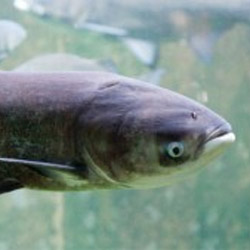Federal Water Tap, January 9: The EPA and Natural Gas
EPA in Court
Landowner rights and government power are in the docket Monday. The U.S. Supreme Court will hear arguments in Sackett v. Environmental Protection Agency, a case that stems from an EPA determination that an Idaho couple was building their home in a wetland. The agency ordered the Sacketts to stop building and take steps to restore the property, or face fines of up to $37,500 per day. Lawyers for the plaintiffs will argue that the ruling violates the “due process” clause of the U.S. Constitution and that the EPA should have to justify its decisions in front of a judge before issuing compliance orders against landowners.
Water Delivery Reversal
A day after telling families in a Pennsylvania town with wells soured by natural gas drilling that it would it deliver water to them, the U.S. Environmental Protection Agency—without explanation—reversed its decision, the Associated Press reports.
EPA officials, according to the Scranton Times-Tribune, had told families in Dimock, Penn. on Friday by telephone that the agency would work out a contract with a water hauler to provide water to more than a dozen families whose wells have been tainted by methane. The state environment agency allowed the drilling operator, Cabot Oil and Gas, to stop paying for water deliveries last month, saying it had fulfilled the requirements of a 2010 settlement.
Other Natural Gas Items
Meanwhile, a top environmental health scientist at the federal Centers for Disease Control and Prevention told the Associated Press that the fracking research agenda should be expanded. The effects of contaminated water on fish and livestock ought to be studied, said Dr. Christopher Portier.
At the same time, the flow of natural gas in the U.S. is not stopping—and soon it will spread beyond the nation’s borders. The second liquefied natural gas (LNG) export facility in North America—originally designed for imports—is being constructed in Louisiana. The Federal Energy Regulatory Commission released an environmental assessment of the Sabine Pass LNG facility. FERC found that approval of the project, with a few changes, would not significantly affect the “quality of the human environment.” The deadline for comments is January 27.
Toxic Substances
Last week the EPA released its annual Toxics Release Inventory, a compendium of chemicals emitted by industrial facilities in 2010. Nationally, chemical releases tracked by the TRI increased 16 percent. State factsheets can be found here.
Reports to Congress
The Congressional Research Service, the research arm of Congress, has released two reports of interest for this space. One examines the process for approving the Keystone XL pipeline; the other outlines legislation that would create a national infrastructure bank, an institution that would provide low-interest financing for water and sewer systems.
And speaking of the pipeline, the Republican-led House Energy and Commerce Committee has posted a “pipeline delay” clock on its homepage. The clock purports to show President Barack Obama’s tardiness in creating the few thousand jobs that would come with his approval of the Canada-to-Texas oil funnel.
Water in the Western U.S.
The first water supply forecasts of the year from the National Water and Climate Center are out. As we push into the middle of January, snow is scarce on the ground. The only major regions with above-average snowpack are on the fringes: Alaska, Arizona, New Mexico and the eastern slopes of the Rockies. Though it is early, the snowpack in California’s Sierra Nevada is particularly low.
Correction: Sabine Pass is not North America’s first export terminal—it is the second. The first was completed in Kenai, Alaska in 1969.
Federal Water Tap is a weekly digest spotting trends in U.S. government water policy. To get more water news, follow Circle of Blue on Twitter and sign up for our newsletter.
Brett writes about agriculture, energy, infrastructure, and the politics and economics of water in the United States. He also writes the Federal Water Tap, Circle of Blue’s weekly digest of U.S. government water news. He is the winner of two Society of Environmental Journalists reporting awards, one of the top honors in American environmental journalism: first place for explanatory reporting for a series on septic system pollution in the United States(2016) and third place for beat reporting in a small market (2014). He received the Sierra Club’s Distinguished Service Award in 2018. Brett lives in Seattle, where he hikes the mountains and bakes pies. Contact Brett Walton




The first LNG export terminal in North America began in 1969 at Kenai, Alaska. It operated continuously from 1969 to late 2011, when it shut down due to lack of gas and lack of a customer. The company states it will begin exporting again sometime in the second half of 2012. See http://lnglicensing.conocophillips.com/EN/lngprojects/Pages/index.aspx